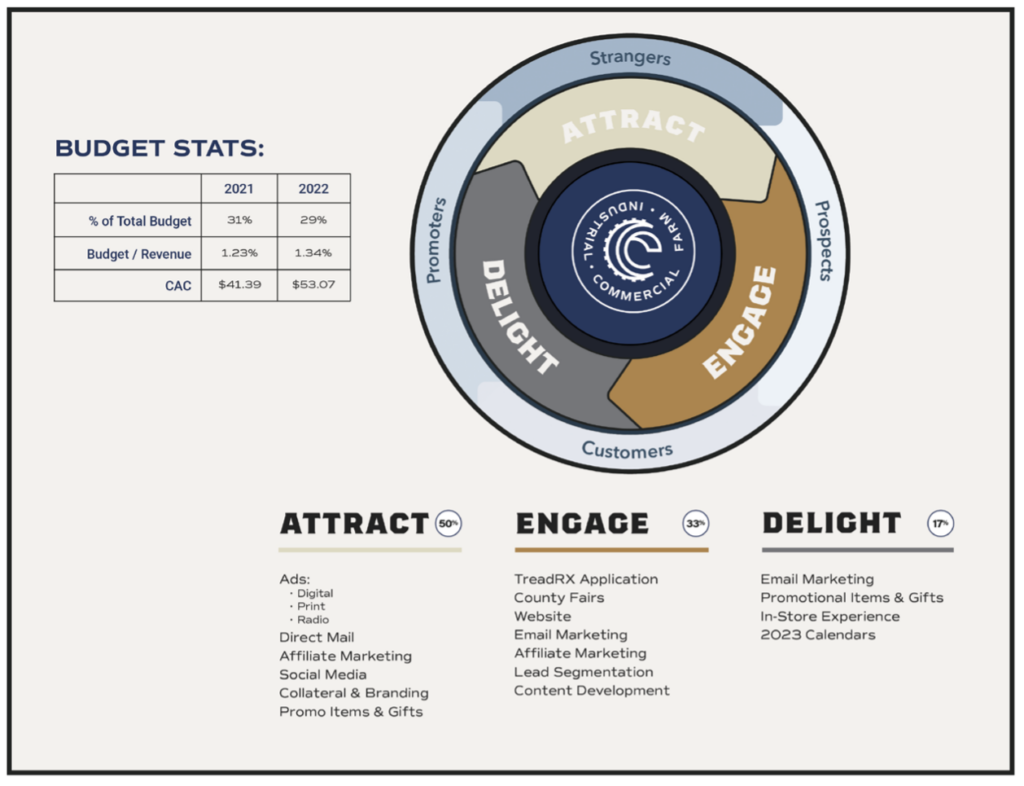
Deciding how to spend your marketing dollars and what to spend them on can be challenging. With so many different channels and tactics available, it can take time to determine where to allocate your resources for the most significant impact. In this blog post, I’ll explore the top five factors I use when making this decision.
1.) Understanding Your Audience
“You” is more important than “we.” Understanding your audience is the first step in deciding how to spend your marketing dollars. Who are they? What channels do they use? What kind of content do they prefer? Understanding your audience will help you identify the channels and tactics most likely to resonate with them and drive engagement. For instance, I only used to put a little stock in podcasts as a marketing tactic once I discovered they were a rich and trusted source of information for much of my audience. Now, podcast partnerships and advertising are one of our more significant investments.
- “Mastering the Art of Buyer Journey Mapping for Modern Marketing”: Explore how understanding your audience influences marketing decisions.
2.) Defining Your Goals
Next, it’s essential to define your marketing goals. Are you trying to increase brand awareness? Generate leads? Drive sales? Different goals require different tactics and channels. Once you’ve defined your goals, you can identify the channels and tactics most likely to help you achieve them. If you’re like me, you probably answered “yes” as you read each goal. Try viewing your budget allocation in terms of your buyer’s journey.
Here’s an example:

3.) Considering Your Budget
Your budget will also play a role in determining where to allocate your marketing dollars. Some channels and tactics may be more expensive, so it’s essential to consider how much you can spend. Be careful here, however. This is when the dreaded “return on investment” monster can rear its ugly head. Just because you can’t measure it doesn’t necessarily mean you shouldn’t invest there. I’ve been questioning this recently: Does my budget allocation match where my current and prospective customers are? (i.e., Does the size of your budget match the size of your audience that is in-market vs. out-of-market for your solution).
4.) Evaluating Competitors and Being Different
It’s also important to evaluate your competitors and their channels and tactics, but not for the reason you might think. In a crowded marketing place where the average consumer interacts with up to 10,000 marketing messages PER DAY, you must do something different to stand out. You will never stand out by watching what everyone else is doing. Be bold and try something different. Those times give you a real shot at genuinely standing out and potentially transforming your company and industry.
- “A Clown in a Boardroom”: Understand the importance of differentiation in marketing.
5.) Testing and Measuring
Finally, it’s essential to test and measure your marketing efforts. Try different channels and tactics to see what works best for your audience and goals. Use analytics and other metrics to track performance and adjust as needed. Word of caution here, as it’s equally important to give tactics a chance to “breathe” and generate impact. When it comes to significant pillar investments, I find it’s best to evaluate annually or twice a year at most.
In conclusion, deciding how to spend your marketing dollars requires careful consideration of your audience, goals, budget, competitors, and ongoing testing and measurement. By strategically allocating your resources, you can maximize the impact of your marketing efforts and achieve the best bang for your buck.

